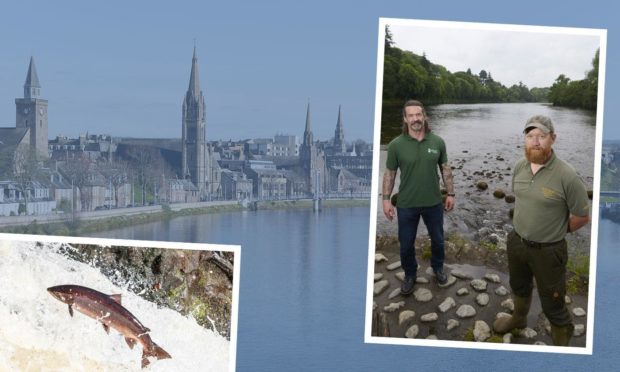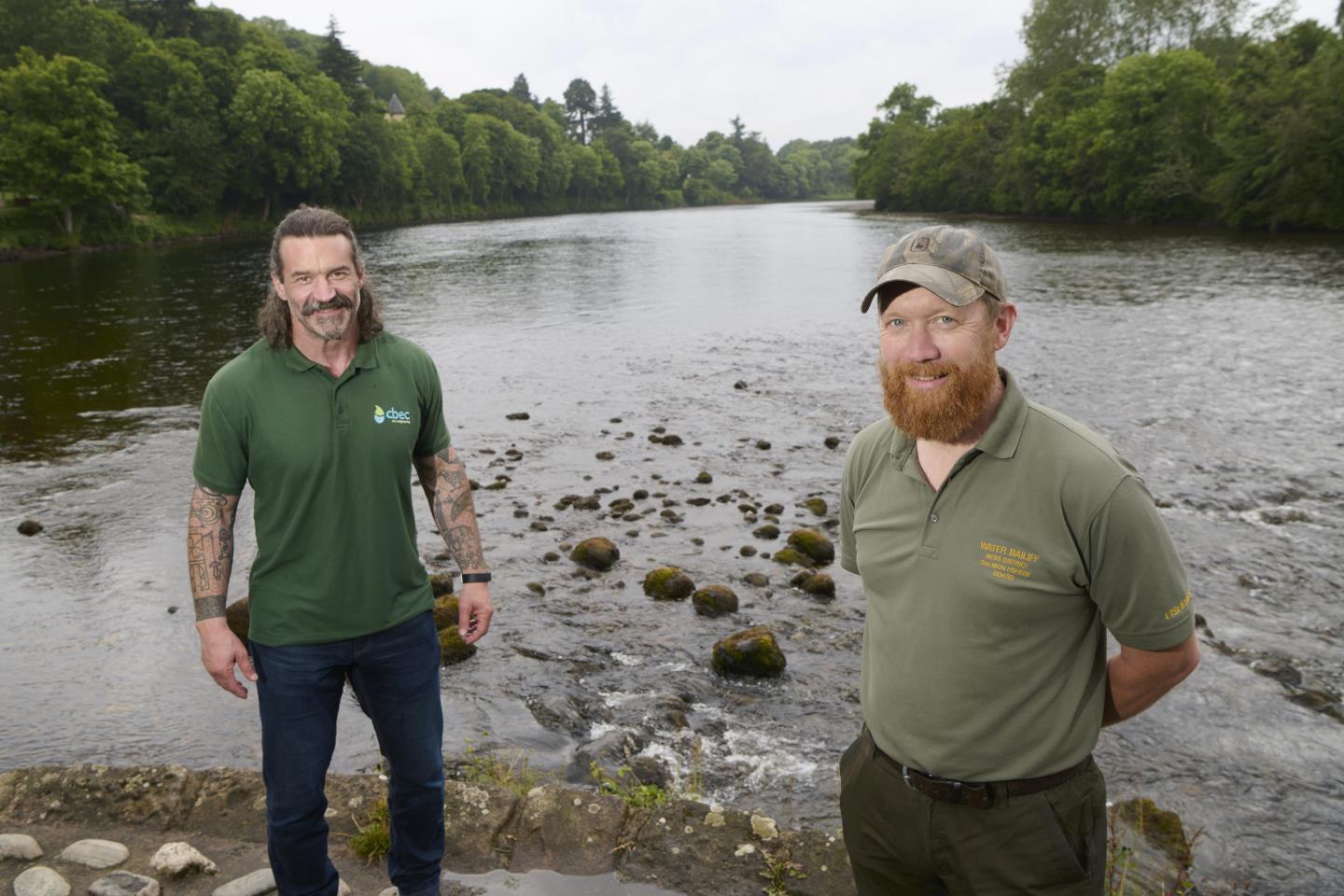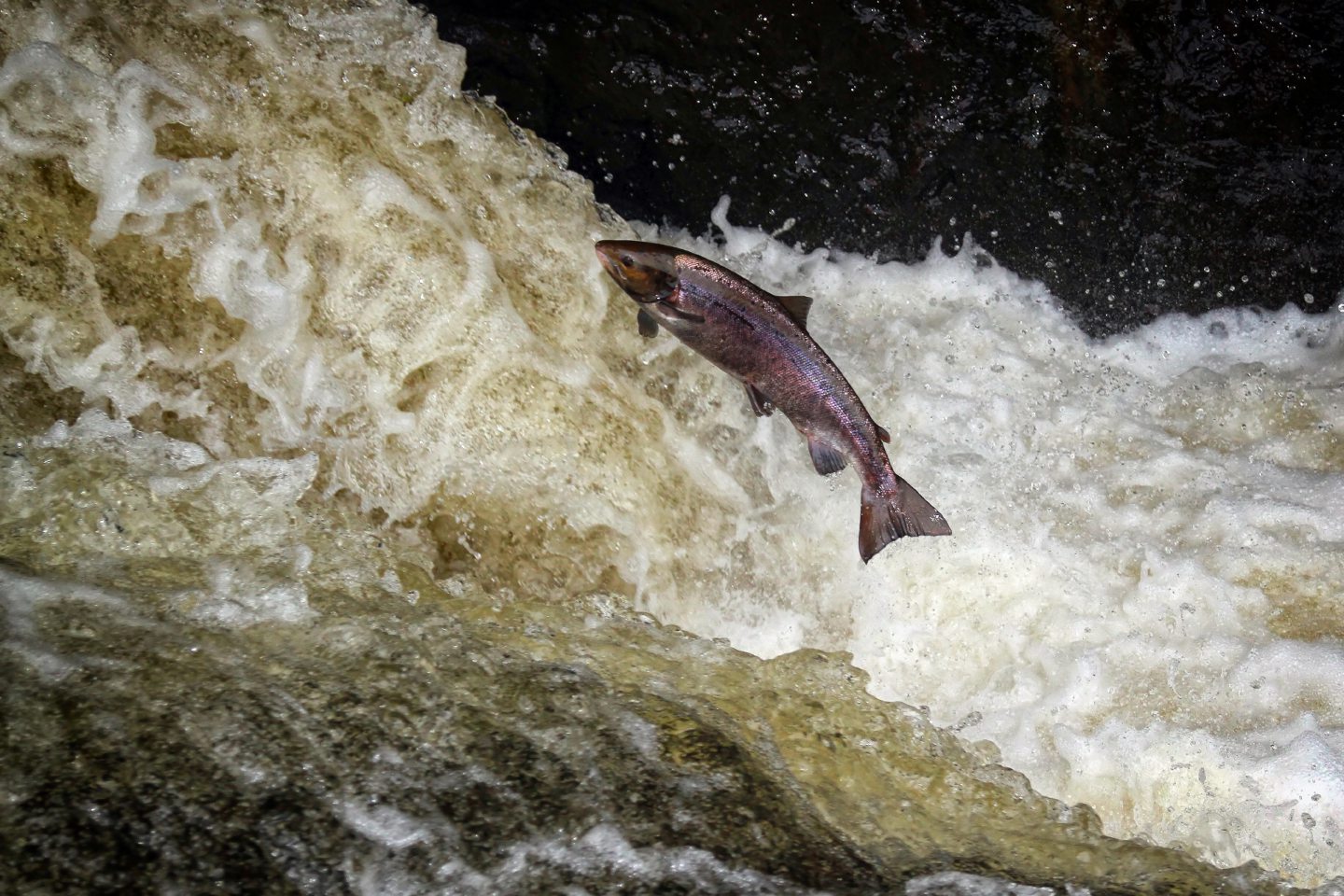A new survey on the River Ness could hold the key to boosting Scottish salmon numbers as stocks reach “crisis point”.
The blueprint is being laid out next month to identify steps that can be taken to protect the habitat of wild Atlantic salmon in the river.
The investigation is being led by the Ness District Salmon Fishery Board to counter a decline in fish numbers by protecting and enhancing the species.
The board says the quality of habitat is under “increasing pressure from human activities and climate change”.
Suitable environment for spawning and rearing required
Chris Conroy, the fishery board’s river director, said: “The survival of wild Atlantic salmon as a globally iconic species relies on them having a suitable environment for spawning and rearing their young.
“The River Ness is renowned for its clean water, natural beauty and quality of its fishing, which attracts anglers from throughout the world, generates inward income and sustains hundreds of jobs.
“The river is the economic heart of the wider Ness catchment system.
“But Atlantic salmon catches have declined across their native range. Climate change is believed to be a key factor, along with changes in water and land management practices.”
Some cracking Atlantic salmon running the Ness just now and check out the size of the sea trout at the end of this footage 😮 @AST_Salmon @SalmonAlliance @fms_scotland @NASCO_Sec @WildTroutTrust @Scottish_FwGrp @marinescotland @visitiln pic.twitter.com/9UKUcoC0Bh
— Ness Fishery Board (@FishtheNess) July 7, 2021
“Many believe that the survival of Scotland’s wild salmon is now at crisis point and we want to help.
“This milestone study will produce an action plan of measures to restore salmon habitats in the Ness which have degraded over time.”
Study to be broken down
The study is being funded by the Ness and Beauly Fisheries Trust.
It has provided a five-figure grant to the fishery board to conduct a habitat restoration feasibility study.
Mr Conroy added: “We’re starting with a survey of the physical and ecological condition of the river from Ness Weir downstream to the tidal limit in Inverness, a total of around eight kilometres (4.9miles).
“This will show us the current state of play in the Ness and what has affected its condition over time.
“It will be followed by a field-based survey, conducted when river levels are low in mid-July, for which we have engaged Inverness-based water environment experts cbec eco-engineering.
“This survey will assess various factors affecting salmon habitats, including human impact.”
An early evening pre-planned fish rescue at Torbrek Bridge on the Holm Burn today. A total of 125 salmon, trout and eels safely relocated to facilitate repair works to the Weir/bridge 👍 @fms_scotland @marinescotland @AST_Salmon @SalmonAlliance @NASCO_Sec pic.twitter.com/eKSSG6sULw
— Ness Fishery Board (@FishtheNess) July 7, 2021
The third tool will be the creation of a series of maps of the river’s present-day physical character.
These will support any future habitat enhancement measures.
Mr Conroy added: “The feasibility report will outline the influence of human pressures on the Ness over time – and identify actions which can improve the natural conditions for fish rearing and production.”
‘Challenging but fascinating assignment’ lies in wait
Dr Hamish Moir, cbec’s managing director, will lead the field-based survey.
Dr Moir, who has conducted habitat rehabilitation projects on river systems across the globe, is an expert in the physical characteristics of Atlantic salmon spawning habitat.
He said: “This is a challenging but fascinating assignment and we’re grateful to the Ness Board for the opportunity to play our part in identifying ways to reduce barriers to fish migration, upstream spawning and juvenile habitat.
“The overall strategy is to identify planned and co-ordinated initiatives aimed at promoting a sustainable fishery in the Ness system.”
Key personnel from Dochfour, Ness Castle and Ness Side estates, as well as Inverness Angling Club and experienced ghillies, will be consulted throughout the process.
The study is due to be complete by the end of the year.












